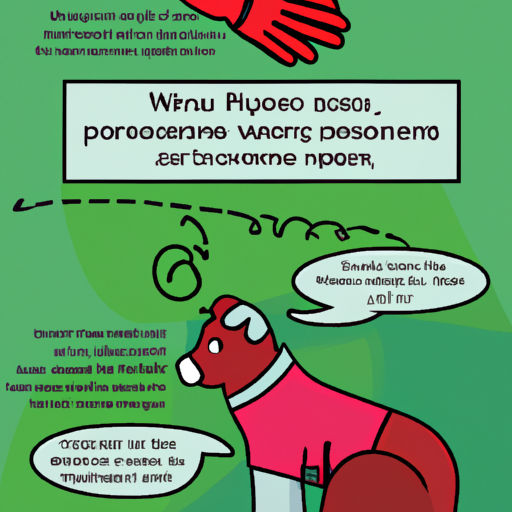As a pet owner, it’s important to understand the health and wellness needs of your furry friend, and that includes understanding how to express your dog’s anal glands. This task might seem daunting, but with the right information, it can be done safely and effectively.
H2: Understanding Your Dog’s Anal Glands
Before we get into the how-to, let’s first discuss what anal glands are. These are two small pouches located on either side of your dog’s anus, filled with a foul-smelling fluid. They usually empty themselves when your dog defecates, but sometimes they can become impacted or infected, causing discomfort for your dog.
- Impacted Anal Glands: If your dog’s anal glands don’t empty properly, the fluid can become thick and pasty, leading to impaction. Signs of this include scooting, licking the area, and discomfort when sitting.
- Infected Anal Glands: If the impaction isn’t resolved, it can lead to an infection. This can cause redness, swelling, and possible abscesses.
H2: When to Express Your Dog’s Anal Glands
Before attempting to express your dog’s anal glands, it’s crucial to know when it’s necessary. Not all dogs need their anal glands expressed regularly. Some dogs never have issues, while others need regular help.
- Check for signs of discomfort: If your dog is scooting their rear end along the floor, licking or biting at the area, or showing signs of discomfort when sitting, it may be time to express their anal glands.
- Regular vet check-ups: Your vet will typically check your dog’s anal glands during routine visits. They can advise you if regular at-home care is needed.
- Change in stool: If your dog’s stool is soft for a prolonged period, it might not be providing enough pressure to empty the glands. This could mean that manual expression is necessary.
H2: How to Express Your Dog’s Anal Glands at Home
Expressing your dog’s anal glands at home can be a messy and somewhat unpleasant task, but it’s possible with the right preparation.
- Gather your supplies: You’ll need gloves, a warm, wet cloth, and a towel.
- Position your dog: It’s easiest if your dog is standing. You might need a second person to help hold them still.
- Locate the glands: The glands are located at roughly 4 and 8 o’clock around your dog’s anus.
- Express the glands: Using your thumb and forefinger, gently squeeze the gland, pushing upwards towards the anus. If you’re doing it correctly, a small amount of liquid should be expelled.
- Clean up: Use the wet cloth to clean your dog and the towel for any mess.
Note: If you’re uncomfortable performing this task, or if your dog seems to be in pain, it’s best to leave this job to the professionals.
H2: Preventing Future Anal Gland Problems
Prevention is always better than cure. Here are some ways you can help prevent anal gland problems in your dog:
- Maintain a healthy diet: A diet high in fiber can help ensure your dog’s stools are firm, which can help the glands to empty naturally.
- Regular exercise: Regular exercise can help regulate bowel movements and therefore, the emptying of the anal glands.
- Regular vet checks: Regular vet checks can help catch any potential problems early before they become severe.
FAQs
Q: Can I hurt my dog by expressing their anal glands?
A: If done incorrectly, yes. It’s essential to be gentle and careful. If you’re unsure, it’s best to consult a vet or professional groomer.
Q: How often should I express my dog’s anal glands?
A: This depends on your dog. Some dogs never need it, while others need it regularly. Your vet can provide the best advice.
Q: What if my dog seems to be in pain?
A: If your dog seems to be in pain, stop immediately and consult your vet. They may be suffering from an infection or abscess.
Q: Can a diet change help?
A: Yes, a diet high in fiber can help ensure your dog’s stools are firm, which can help the glands to empty naturally.



